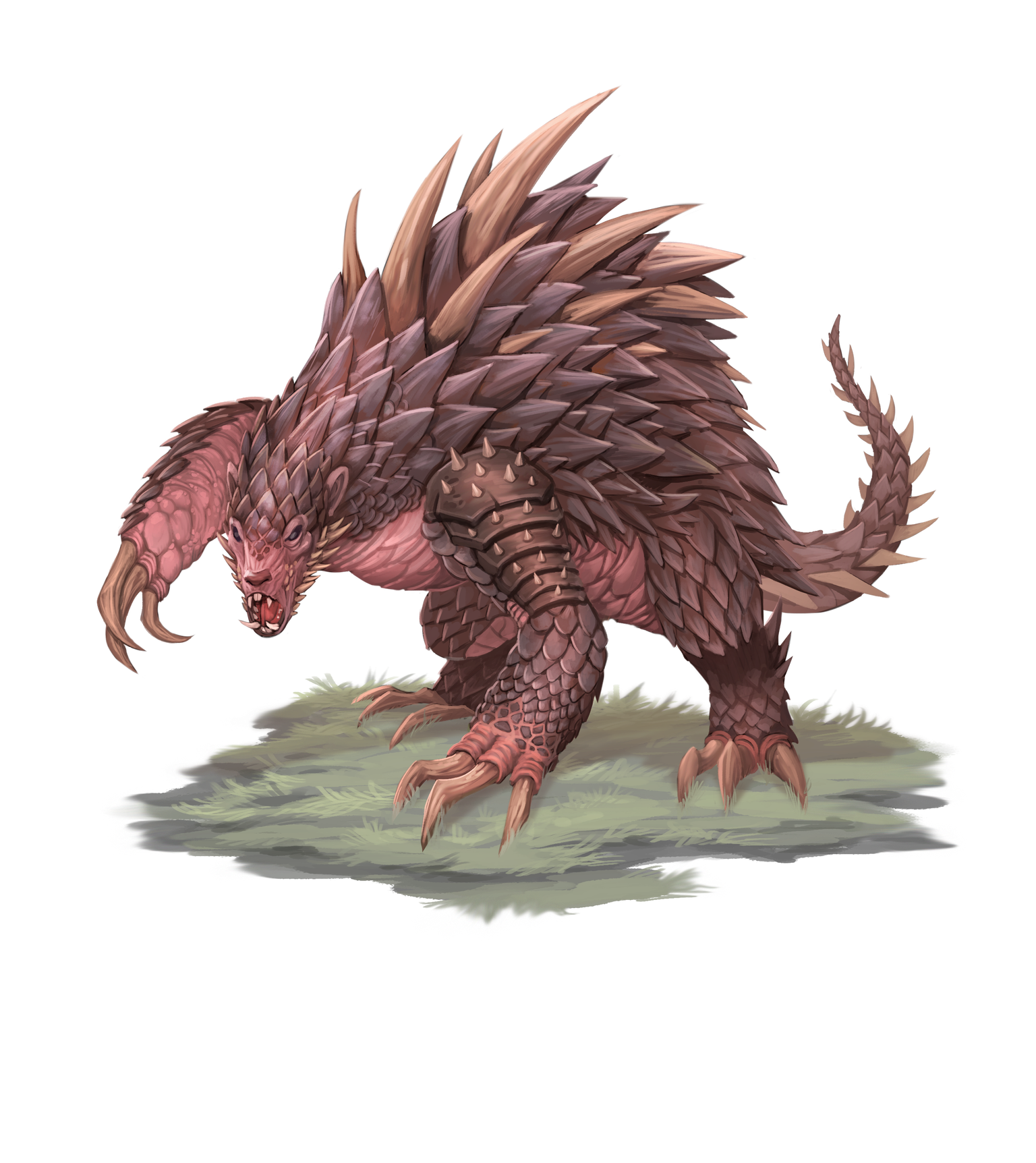
Some monsters are bags of hit points, and it can be fun to stand around the pinata and beat it until it explodes into experience points.
But if a monster has a weak point, some trick to exploit, a combat encounter takes on a new feel. Monster weaknesses can deepen an encounter, making it more fun and more memorable. Let’s take a look at how those are implemented, and try out some new ideas with Tome of Beasts 3 monsters (now available for pre-order and on sale soon!)
What are Monster Weaknesses?
In many stories, characters discover and exploit a monster’s weaknesses to overcome them. Some are straightforward. For example, in The Lord of the Rings: The Two Towers (film), just before the battle of Helm’s Deep, the elven archer Legolas tells his comrades that the Uruk-hais’ armor is weak at the neck and under the arms. Classic weakness.
Other times, weakness must be discovered. For example, in Critical Role: The Legend of Vox Machina, Vax’ildan comes upon a cryptic hint in a book from Gilmore about how to defeat the dragon scourge by [* no spoilers*].
5E Weaknesses
Fifth edition D&D has some weaknesses built into monster stat blocks.
- Ankhegs have reduced AC while prone. It’s not always tactically sound to focus on knocking an enemy prone . . . unless their underside is weak!
- Skeletons are vulnerable to bludgeoning damage. Fighters are proficient in all manner of weapons, but how often do they switch between their greatsword and their flail?
- In the introduction to Tome of Beasts 3, Luke Gygax (lamenting that his players are keen to this fact) highlights that trolls stop regenerating when they take fire damage.
These weaknesses provide an interesting change in the course of a fight, giving players opportunities for strategy in how their characters exploit them.
Existing Weaknesses
Meaningful choices make combat more interesting. Several creatures in Tome of Beasts 3 have interesting weaknesses baked into their stat blocks that give players choices on how to approach a conflict.
- Akankas are arachnid-like Fey that have a Mirrored Carapace action that allows them to project illusory duplicates. However, because this requires light for the mirror, it doesn’t work in darkness. This weakness makes things interesting because typically characters benefit from fighting with a light source, but against this creature, they might weigh the benefits of fighting with lights out.
- Aural hunters are creepy six-legged Aberrations that use sonic vibrations to navigate. Their Sonic Sensitivity trait causes them to become temporarily deafened when they take thunder damage, dropping their blindsight radius to only 20 feet while deafened. They’re blind beyond this radius. Plenty of spells that deal thunder damage, such as thunderwave (1st level)and shatter (2nd level). However, slinging one of these spells might not be so easy if the aural hunter gets the drop and uses its Consume Sound action to silence a caster!
- Mulchers are vicious fungi with a central stalk. The mulcher’s Central Stalk Weakness trait allows creatures to target that stalk separate from the mulcher itself. Destroying it makes the mulcher much less dangerous. Players make a potentially difficult choice whether to deal damage to the mulcher or grind through 50 hit points of central stalk to ease the rest of the fight.
For more examples as you thumb through Tome of Beasts 3, check out the alazai’s Iron Disruption trait, the ice golem’s Ice Cavity trait, and the sewer weird’s Flammable Flames.
Adding More Weaknesses
Not every creature needs a weakness. However, they can make things fun and interesting, spicing things up beyond what is already in the book. Below are three examples of new traits you can add to a creature’s stat block as weaknesses.
Reef Drake
These drakes have impressive natural armor, which resembles the coral reefs they inhabit. In the real world, coral is being destroyed by ocean acidification. Acid is one of the less common damage types (and often does not come from the most damaging spells), making it an interesting tradeoff—use an acid spell that potentially deals less damage, but also gives additional benefits.
Solubilize. If the reef drake takes acid damage for the first time on a turn, its scales begin to dissolve causing it to suffer a cumulative −1 penalty to its AC (to a minimum of 12). The reef drake’s AC is restored after it completes a long rest.
Dire Pangolin
This formidable Beast has a Tuck In action to gain defensive benefits while it rolls into enemies with its Edged Scales trait. However, the dire pangolin is far less formidable if it stays in this form. It can’t use its Claws and Tail Slap action then. Clever players may try to use the dire pangolin’s Tuck In action to their advantage, keeping it balled up rather than focusing on brute force damage.
Ball and Chain. The pangolin cannot uncurl its body while restrained.
Ion Slime
These oozes feed on electrical energy, allowing them to absorb and release it to their benefit. In the real world, the movement of charged particles creates magnetic fields and opposite charges attract one another. Characters may try to use lightning damage in a way that affects how the ion slime can or chooses to move around the battlefield. Perhaps a player may be so bold as to inflict lightning upon itself or an ally in order to control the ion slime’s movement.
Alternating Currents. The ion slime cannot choose to move further away from a creature that took lightning damage within 60 feet of it since the end of the ion slime’s last turn.
Next Up
In the next installment of Monster Weaknesses, we’ll look more at implementing weaknesses at your table, and introduce several more new ones you can try out.


Just got my copy last night, haven’t finished reading but I was enjoying these.
On the topic of Luke’s intro, there is an apocryphal 1e story about an evil wizard that gave some trolls potions of fire resist. They coated themselves in pitch, lit themselves on fire and charged the party. Everyone completely forgot that acid also works, and ran away convinced the trolls were invincible.
One of the best things about weaknesses is that even when the party learns how to exploit them, the encounters can still be surprising if the weakness changes or is flipped somehow.